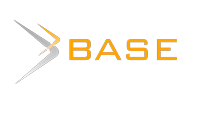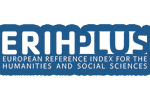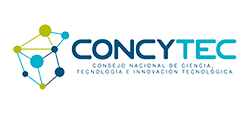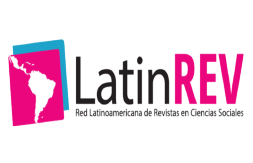Submissions
Submission Preparation Checklist
As part of the submission process, authors are required to check off their submission's compliance with all of the following items, and submissions may be returned to authors that do not adhere to these guidelines.- The submission has not been previously published, nor is it before another journal for consideration (or an explanation has been provided in Comments to the Editor).
- The submission file is in OpenOffice, Microsoft Word, or RTF document file format.
- Where available, URLs for the references have been provided.
- The text is single-spaced; uses a 12-point font; employs italics, rather than underlining (except with URL addresses); and all illustrations, figures, and tables are placed within the text at the appropriate points, rather than at the end.
- The text adheres to the stylistic and bibliographic requirements outlined in the Author Guidelines.
Author Guidelines
RULES FOR THE PUBLICATION OF SCIENTIFIC ARTICLES IN THE SANTIAGUIN CONTRIBUTION
Article 1. Approach and scope
Aporte Santiaguino is a research journal edited by the Directorate of the Research Institute – Vice-rectorate for Research of the National University «Santiago Antúnez de Mayolo» (Huaraz, Peru). Its objective is to publish and disseminate the results of engineering research carried out by the Santiago scientific community, as well as other universities, centers and research institutes both nationally and internationally. The magazine's reach is worldwide.
As of 2018, preference will be given to those manuscripts related to the areas of:
Engineering: Environmental and Sanitary Engineering, Agricultural and Agronomic Engineering, Civil Engineering and Architecture, Mining and Metallurgy Engineering, Industrial and Food Engineering, Agroindustrial Engineering, Environmental Biotechnology.
The target audience for the journal is primarily the academic, engineering research community.
The content of the contributions is the sole responsibility of the authors, and in no way of the journal or the entities for which the authors work.
Article 2. Section Policies
Articles can belong to one of the following categories: Editorial; Original Articles and Review Article (reviews).
Editorial
It will be written by invitation of the Editor of the Aporte Santiaguino magazine. The editorial constitutes an opinion on a specific topic, the policy of the journal and engineering research.
Original research articles
They are primary, unpublished articles that expose the results of completed research work or an advance with preliminary results on engineering issues and constitute contributions to knowledge and development or application of technological systems. The body is organized in: Introduction, Materials and methods, Results, Discussion and Conclusions, the total length of the manuscript, including bibliographical references, should not exceed twelve (12) pages. The illustrations (Tables and Figures) must be only those necessary for a better presentation of the results.
Review Article (reviews)
The review article aims to synthesize the current state of knowledge on a specific topic through a bibliographic review. In turn, a literature review is a systematic, explicit, and reproducible method for identifying, evaluating, and synthesizing the existing body of performed and recorded work produced by researchers, scholars, and practitioners. The body is organized in: Introduction, Materials and Methods, Development and discussion, Conclusion, Bibliographic references. The total length of the manuscript, including bibliographical references, should not exceed twenty (20) pages.
Article Format
- Structure of original research articles
The structure of an original scientific article to be published in Aporte Santiaguino is unique, uniform, concise and understandable, so it cannot have variations according to the option of each researcher. The original article must include the following parts:
Title. In Spanish and English. The best title is the one that indicates by itself the content of the study. It should be clear and concise. The title should be written in highs and lows with Garamond font at 13 points. In Spanish in bold and in English without bold.
Author(s). The names of the authors must be adjusted to the international format for the signature of authors of manuscripts. If there are several authors, the names must be placed in order of the contribution to the work. Commas will be used to separate names from authors.
Institutional affiliation. Each author may include a maximum of two relevant affiliations including city and country. The name of the university, center or research institute or other institution to which the author is affiliated and will appear in a footnote with a callout with superscript Arabic numerals after the author's names.
Abstract.
In Spanish and English. It must contain at least the objective of the study, the methodology, the main results or findings and the conclusions. This should not carry references of any kind; should not exceed 200 words in each language. Both the summary and the abstract must include 3 to 5 keywords at the end of each text, separated by a semicolon (;). It is suggested to use the terms descriptors and qualifiers in engineering.
Introduction. It must be brief, clear, without subtitles. It contains a brief statement of the purpose of the work, the current status of the problem, background, justification, the scientific gap and the objective of the study. It concludes with the presentation of the anticipation of what will come in the development of the article. The use of bibliographic citations is essential to help introduce the reader to the subject and demonstrate the existing scientific gap in the subject.
It does not include data and conclusions of the work that is being published. It is written in the present tense.
Materials and methods. Describe the methodology used, including the type and design of the research and, when necessary, the characteristics of the population and the method of selecting the sample. Likewise, the procedures, methods, techniques and instruments used in the investigation must be mentioned. The ethical aspects involved in its realization should also be mentioned, such as the use of informed consent and others that are pertinent.
Results. The results of the research are presented in a clear, objective and logical sequence, without including opinions or interpretations, except when it comes to statistical aspects. Likewise, they can be complemented with tables, figures and statistical tests (in the case of quantitative works) and with quotes from testimonies, descriptions, narratives and observations (in the case of qualitative works). It is possible to include subtitles to facilitate your presentation.
Discussion. The results themselves are analyzed and explained and compared with previous knowledge (theoretical basis) and with the findings of other authors, exposing the author's inferences. The new aspects of the study are emphasized and the validity and interest of the study are defended.
Conclusions. They present the Author's contribution. The objectives, hypotheses and problem are answered. They are presented in order of importance, but are not listed.
Acknowledgments (optional). When appropriate, the mentioned thanks are made specifically to whom and for what type of collaboration in the research.
Bibliographic references. It presents the list of all the authors cited in the text, in alphabetical order. The guide for in-text citations and bibliographical references follows international conventions based on the standards of the American Prychologica! Association (APA 7ma) adapted for the journal and appears later.
Correspondence. Indicate the name of the Principal Investigator and his email.
- Structure of the review articles
Title to Introduction follow the same criteria specified for the original research article.
Introduction: Define objectives. The need to address the question or questions to be answered (of the topic to be reviewed) must be raised.
Materials and Methods: In which it is explained how, with what criteria and what works have been selected and reviewed. The quality of the selected articles is evaluated. The variability, reliability and validity of the articles are analyzed.
Development and discussion: In which the most outstanding details of the reviewed articles and the discussed synthesis are presented and the critical argumentation of the results (designs, biases, limitations, conclusions drawn) is given.
Conclusion: They are based on the data and articles analyzed, in which the consequences that are extracted from the data and articles analyzed, proposals for new hypotheses and specific lines of research for the future are presented.
Bibliographical references: These are the bibliographical references of the documents used. The guide for in-text citations and bibliographic references follows international conventions based on the standards of the American P.rychologica! Association (APA 7ma) adapted for the journal and appears later.
Article 3. Peer evaluation process
The editor verifies whether the submitted material conforms to the editorial line and conditions requested in this publication standard. If there is compliance, the article is submitted to a peer review system, resorting to at least two (02) external reviewers or evaluators, to express their opinions (According to the "evaluation sheet"), recommending acceptance or rejection of the article. In case the opinions are contradictory, the Editorial Committee will assign a third evaluator.
If the article does not conform to the editorial line or conditions requested in this Publication Policy, the Editor reserves the right to send a report to the author to change or rewrite their article, totally or partially, with the authors having to start the process again . submission of your work. In the worst case, the manuscript is rejected and the authors are notified, attaching a report with the reasons for the rejection.
Once the opinions are received, the editor will analyze them to make a decision on the publication of the manuscript. Any type of opinion is final and there are four possible ones, which are described below.
- Accepted in its current form. The manuscript does not need modifications and can be published in its current state.
Accepted with minimal adjustments. The manuscript can be published if minor modifications are made according to the comments of the reviewers. The review committee of the journal verifies the corrections. It does not require a new evaluation by the referees. The modified version of the article must be accompanied by the change guide in Word and/or tex.
Correct and reevaluate. The manuscript requires major modifications and will need to be resubmitted for a next round of evaluation. The authors must submit a new version in accordance with the comments of the reviewers, who will re-evaluate the article to verify its quality and attention to the suggested modifications. The modified version of the article must be accompanied by the change guide in Word and/or tex.- Rejected. Publication of the manuscript is not recommended. The reasons for the rejection will be sent to the author and there is no possibility of a reevaluation.
The average response time between receipt of the article and the decision of the editorial committee varies between one to four months, depending on the speed of our reviewers and the response of the authors.
The main author of the article has the right to consult us at any time about the progress of the review of their article, for this they must consider the review times that will be communicated to them upon receipt of their article; The response of the observations must be given within two weeks of sending the file, in case of requiring more time, it must be communicated previously; If there is no response within two weeks of sending the communication with the observations, the article will be rejected.
Peer review is a voluntary process that is done free of charge. The referees are not authorized to copy the manuscripts under review for private use or to send these manuscripts to third parties, in whole or in part.
Article 4. Frequency of publication
The research journal Aporte Santiaguino is a biannual scientific publication, with an annual volume divided into two issues (1: January-June; 2: July-December). Each number is published in an electronic version.
Article 5. Publication model
Revista Aporte Santiaguino publishes its articles under an open access model, where there are no charges for accessing published articles, nor are authors charged for publishing.
Therefore, any user of the journal can access the content freely, that is, they can download, read, print, distribute, search, process full or partial texts of the journal without prior notice to the editor, author or institution, since we We abide by the definition of open access established by the BOAI (Budapest Open Access Initiative), but always preserving the moral rights of the author.
Article 6. Submission of Articles
Aporte Santiaguino publishes original research articles and review articles, written in Spanish and English (articles accepted, it will be the responsibility of the authors to carry out a rigorous translation), provided that their quality is certified through peer review and there is no previously published partially or totally, nor sent simultaneously to other scientific journals. In order for the manuscripts to be accepted and published, they will be submitted to a specialized external arbitration that will guarantee quality. The arbitration system adopted by the journal is double-blind.
The texts must be sent by the OJS platform through its registry (http://revistas.unasam.edu.pe/index.php/index/user/register) in a standard word processor format, always indicating the program and the version used ( Word ).
The cover letter must mention compliance with international ethical standards and include the link or link for access to the Directory of Human Resources related to CTI.
Attached is the cover letter addressed to the Director of the journal requesting review of the manuscript signed by the main researcher, a simple sworn statement signed by all the authors where they declare that the submitted manuscript is unpublished and is not in the evaluation process by another journal in any language and letter of assignment of publication rights. The cover letter must mention compliance with international ethical standards and include the link or link for access to Cti Vitae (Directory of Human Resources related to CTI (concytec.gob.pe)) and/or Orcid id ( ORCID).
Article 7. General aspects
1) The manuscript must not have been previously published or be in the process of being reviewed in another journal. While the review process lasts, the manuscript sent to Aporte Santiaguino cannot be sent to any other journal unless they receive a written communication from the journal indicating that it will not be published in the journal.
2) By submitting their manuscript, the researcher authorizes Aporte Santiaguino to edit the manuscripts in order to improve their clarity, grammar, and style; In addition, the magazine declares that the names and email addresses sent to this publication will be used exclusively for the purposes established in our regulations.
3) When works carried out on animals or humans are described, it must be declared that international ethical standards for animal research have been complied with. This must appear before the bibliographical references and must have the approval of a recognized Ethics Committee.
4) Articles submitted to the journal must be original and unpublished; The summary must be written in Spanish and English, typed on white bond paper measuring A4 (212 x 297 mm.), on one side, spaced and a half, with a 30 mm margin. for the left side and 25 mm. for the top, bottom, and right margins.
5) The total length of the manuscript, including bibliographical references and annexes, should not exceed 12 pages written on one side, in 12-point characters in Garamond font (except the title, which will be written in 13-point font).
6) The total length of a review article, including bibliographical references and annexes, should not exceed 20 pages written on one side, in 12-point characters in Garamond font (except the title, which will be written in 13-point font). .
7) The names of the authors must be adjusted to the international format for the signature of authors of manuscripts according to the IraLIS platform (International Registry for Authors: Links to Identify Scientists) http://iralis.org. where it is suggested:
- a) Name + Middle Initial (optional) + First Surname.
- b) If you want to use the second surname, both surnames must appear joined by hyphen.
8) Words or phrases in languages other than Spanish should be written in italics followed by their translation in parentheses:
9) The units of measure must be expressed according to the International System of Units (SI). Use COMMA for decimals, in the abstract use POINT for decimals.
10) Abbreviations and symbols should be avoided in the title. When an abbreviation is used for the first time, it will be preceded by the full term to which it corresponds. The symbol for a unit of measure in common use does not require the full name when used for the first time.
11) The figures and tables with their legends and respective titles will be included in the text, numbered consecutively. The tables are editable and the figures of good quality. Photographs (originals) must be submitted in JPG format.
12) In the case of figures, (it is not titled as a graph, or photos, or maps, or the like). Figure names begin with the term Figure, in bold, followed by the number of the figure, also in bold. No punctuation will be included after the number and no punctuation will be placed at the end of the figure caption.
Example
Figure 1
Efficiency levels

13) The format of the tables must be designed indicating number and source if applicable. Example:
Table 1
Fermentation parameters of native ethanol-producing strains in synthetic medium

14) Do not use dashes or bullets anywhere in the text, unless necessary.
15) All the publications cited in the text must be listed in the Bibliographic References section, and vice versa, all the Bibliographic References listed must have been cited in the text. An important indication to take into account is that at least 75% of the bibliographical references must be scientific articles. Minimize as much as possible the use of books and/or web pages.
Article 8. Citations and bibliographical references
Make sure that all works cited in the text appear in the bibliographical references section. To make citations follow the international conventions in magazines or Journals based on the standards of the American Psychological Association (APA 7th). Among others, you must follow the following conventions:
1) References within the text. Comments, opinions, points of view, etc. of other authors must appear indicated inside the text by brief parenthetical references that include only the author's last name, the year of publication and the page (optional).
2) Verbatim quotes. When the citation exceeds four lines, it must appear with a different margin from the rest of the text (one centimeter from the left margin and single spaced) and written in Garamond 11 font size. The citation must be written without quotation marks and must end with a separate period, then the source will be cited in a parenthetical reference (in this case the page is mandatory).
If the citation of a text does not exceed four lines, it is indicated with angled quotation marks and it is incorporated into the text with the same type and size of letters. In this case, the citation ends with a period after the parenthetical reference. Example:
The objective of explanatory studies is "to respond to the causes of physical or social events" (Hernández, Fernández & Baptista, 1991: 66).
3) The style for presenting references is based on the standards of the American Psychological/Association (APA 7ma). Based on this, at the end of the work the list of references cited in the text will be included, in alphabetical order. Likewise, 30% of the bibliographical references must be in English).
4) All publications cited in the text must be listed in the Bibliographic References section in APA 7th edition. Minimize as far as possible the use of books, theses and/or web pages. Include DOI numbers or URLs in references if possible.
5) It is recommended to include all the authors in the bibliographical references, up to a maximum of ten, indicating from the eleventh the legend «.and others». This with the intention of favoring the visibility of co-authors who, in general, see their metrics affected by this formalism.
Here are some examples to keep in mind when making appointments and bibliographic references:
Periodical publications (magazine articles):
Last name(s) of the first author, Initial letter(s) of the name.; Last name(s) of the second author, Initial letter(s) of the name. and Last name(s) of the author, Initial letter(s) of the name. (Year of publication). Article title. Name of the journal, volume (number), initial page-final page (without indicating p., pp. or other abbreviations). DOI (full, including http protocol).
Example 1. Online article:
Arzola-Ruiz, J.; Asís-López, M.; Espinola-Gonzales, J. y Rodríguez-Sabino, V. (2015). Generación automática de mallas triangulares con control de error y aplicaciones en la industria. Aporte Santiaguino, 8 (2), 183-192. https:/ /doi.org/10.32911 /as.2015.v8.n2.224
Monographs (books):
Last name(s) of the first author, Initial letter(s) of the name.; Last name(s) of the second author, Initial letter(s) of the name. and Last name(s) of the author, Initial letter(s) of the name. (Year of edition). Title of the monograph. Editorial. DOI (full, including http protocol).
Example 2. Book:
Ortega, J. L. (2014). Academic search engines: A quantitative outlook. Elsevier.
Book chapters (including conference contributions):
Last name(s) of the author, Initial letter(s) of the name. (Year of edition). Title of the chapter or contribution. In Surname(s) of the first editor, Initial letter(s) of the name.; Last name(s) of the second editor, Initial letter(s) of the name. (type of responsibility: ed./ coord./ comp./dir.). Title of the book or the proceedings of the congress (pp. xx-yy). Editorial. DOI (full, including http protocol).
Example 3. Book chapter:
Piñeiro Otero, T. y Martínez Rolán, X. (2016). De la reflexión al análisis cuantitativo: una aproximación a la investigación radiofónica española. En Díaz Nosty, B.; De Frutos, R. (coord.), Rumbos de la investigación en España sobre Comunicación (pp. 719-796). AE - IC. http://goo.gl/k51q1R
Article 9. Authorship
Only those people who have contributed intellectually to the development of the work should appear in the list of authors. In general, to appear as an author, the following requirements must be met:
- Having participated in the conception and design, data acquisition, analysis and interpretation of the data of the work that has resulted in the article in question.
- To have participated in the drafting of the text and in its possible revisions.
- Having approved the version that will finally be published. The authors will be stated both on the first page of the title and in the Add/Edit/Remove/Author section. Statement that they have read and approved the manuscript and that the requirements for authorship have been met.
The journal declines any responsibility for possible conflicts arising from the authorship of the works published in the journal.
Article 10. Editorial team
The actions of the Editorial team will be based on the principles of transparency, originality, integrity and quality in the fulfillment of its objectives. In this case, it will take measures, among others, plagiarism detection, data manipulation, redundant and/or duplicate publication.
Article 11. Authors
The authors must be committed to the ethical and responsible development of their research, the article must be of their own creation, original and unpublished, avoid plagiarism at all costs.
Articles must have internal consistency in line with the identified research problem, objectives, methodology, results and conclusions.
They must provide their personal information correctly, send in a transparent and original way all the documentation required by the editorial team, provide permissions if resources from other authors were used (images, etc.), confirm that the manuscript proposal has not been sent to another magazine, declare any possible conflict of interest.
Privacy Statement
The names and email addresses entered in this journal site will be used exclusively for the stated purposes of this journal and will not be made available for any other purpose or to any other party.





















